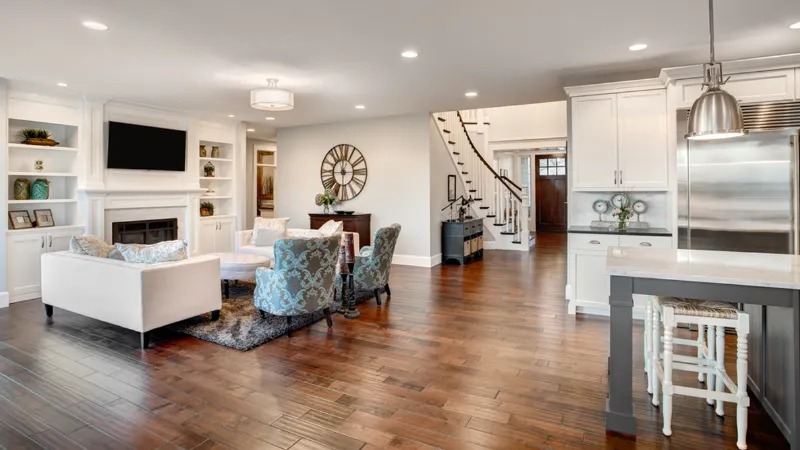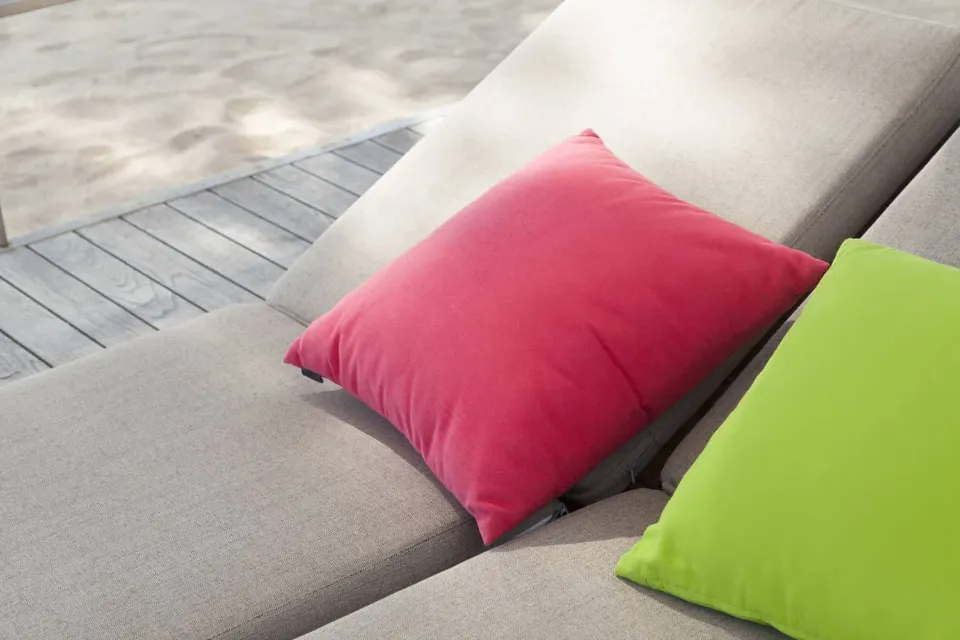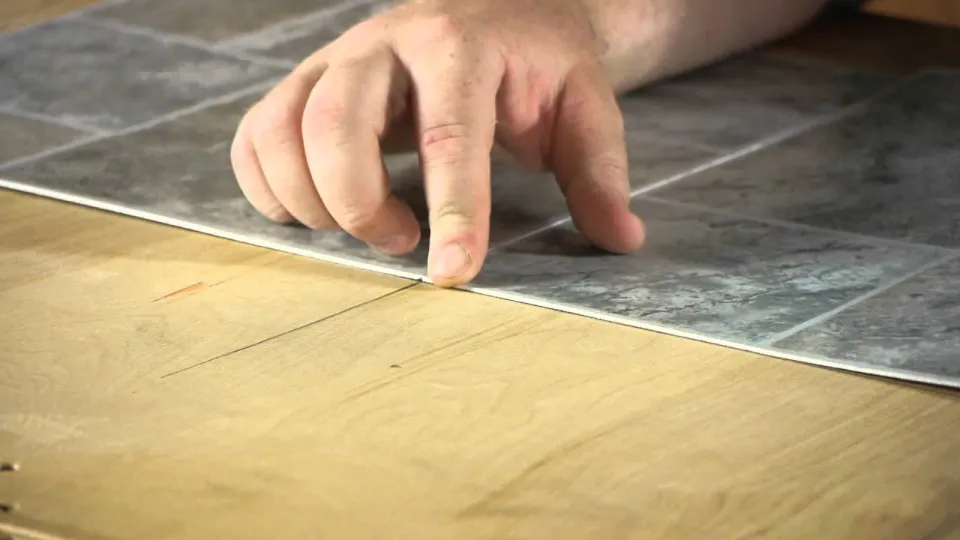Below, we outline the cost to install several different types of hardwood floors, plus list the pros and cons of this type of flooring.
The average cost of installing hardwood flooring is $3 – 10 per square foot of materials and $3 – 8 per square foot of labor, totaling $6 – 18 per square foot.
Please read on for more detailed information.
Average Hardwood Flooring Cost
The average cost of installing hardwood floors is $3–$10 per square foot for materials and $3–$8 per square foot for labor, totaling $6–$18 per square foot. A single 200-square-foot room might cost $1,200–$3,600, while a 2,000-square-foot house could cost $12,000–$36,000. Wood quality influences price, with high-end flooring costing up to $25 per square foot. Square footage is the greatest determinant of price. Still, the following factors also come into play:
- Type of flooring: Although engineered wood or parquet are other options, solid hardwood is the more conventional choice.
- Tree species: The more durable and less common the wood type, the more it costs.
- Thickness: The price of thicker boards increases because they can withstand more refinishing.
- Grade: Boards of higher quality cost more than boards of lower quality.
- Cut/grain: The amount of labor and waste depends on how the boards are cut from the tree.
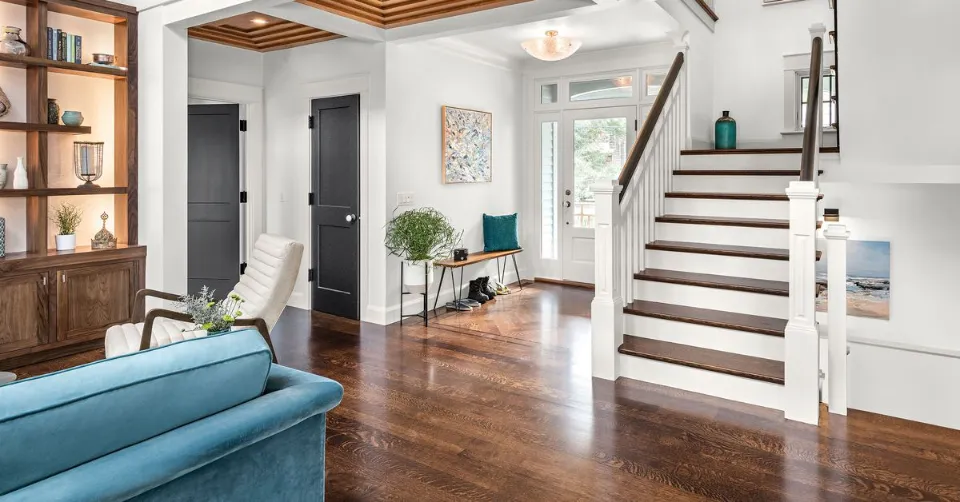
Type of Hardwood
The price of the wood and the installation labor are two factors that affect how much hardwood flooring costs. Traditional solid hardwood flooring consists of real wood planks cut from trees, which are installed end-to-end. Engineered wood flooring, which has a veneer of real wood nailed to a plywood substructure, might be a little less expensive. The most costly type of flooring to install is parquet, which uses smaller pieces of actual wood to create geometric patterns like a herringbone pattern. Prefabricated parquet-like tiles are a more affordable option that mimic parquet but are simpler to install.
| Type | Material Costs | Installation Costs | Sq. Ft. Total Cost |
| Solid hardwood | $2–$20 | $3–$8 | $5–$28 |
| Engineered wood | $3–$14 | $3–$9 | $6–$23 |
| True parquet | $3–$18 | $10–$22 | $13–$40 |
| Parquet-style tiles | $3–$5 | $7–$10 | $10–$16 |
By Tree Species
Tree species greatly influences the cost of traditional hardwood. There are numerous wood species to pick from, each with a unique appearance and functionality. Some tree species are more resilient than others or are better suited to particular types of climates. In general, wood costs increase with its hardness and durability.
| Species | Cost per Sq. Ft. |
| Bamboo | $2–$6 |
| Brazilian walnut | $5–$10 |
| Cherry | $4–$7 |
| Cypress | $4–$6 |
| Hickory | $3–$7 |
| Mahogany | $6–$8 |
| Maple | $3–$10 |
| Pine | $2–$4 |
| Red oak | $2–$6 |
| Teak | $9–$13 |
| White ash | $5–$8 |
| White oak | $4–$7 |
By Thickness
Three-quarters of an inch thick is the standard for hardwood floorboards. Less expensive, thinner boards—up to five-sixteenths of an inch thick—cannot be sanded and refinished as frequently.
| Thickness | Cost per Sq. Ft. |
| 5/16″ | $2–$5 |
| 3/4″ | $3–$10 |
| 7/8″ | $5–$15 |
By Grade
Since solid hardwood flooring is made from living trees, its quality is not as uniform as that of flooring produced in factories. Different vendors have different standards for grading their products’ quality; for example, some grades refer to grain pattern, texture, or appearance rather than durability. In general, hardwood boards of the same species and cut have three tiers of quality that determine their cost:
| Grade | Cost per Sq. Ft. |
| Low-tier | $2–$6 |
| Mid-tier | $5–$10 |
| High-tier | $8–$18 |
By Cut and Grain
The way wood is cut creates its grain pattern, which can play into price relative to the species of tree. For a grain pattern resembling waves or flames, flat-sawn or plain-sawn planks are cut parallel to the tree’s growth rings. To achieve a straighter grain pattern, quarter-sawn planks are cut from growth rings at a 60° to 90° angle. Compared to quarter-sawn boards, which are more expensive but wear more consistently, flat-sawn boards are more prevalent and consequently less expensive. Rift-sawn boards, which have the most linear grain pattern but produce the most waste, are the rarest and most expensive.
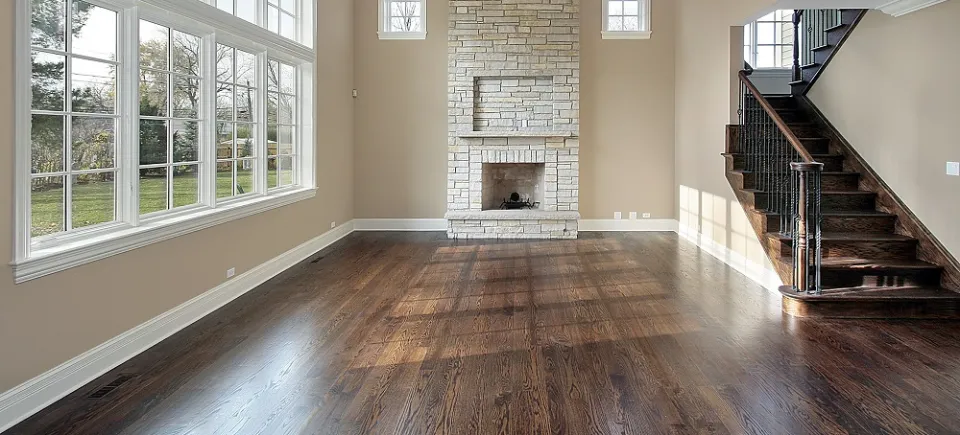
Additional Costs to Consider
When setting a budget for new hardwood flooring, there are several additional things to take into account. Think about whether your project will entail finishing your floors, replacing any flooring that is currently in place, removing outdated materials like carpet, or any combination of these.
Repair Vs. Replace Vs. Refinishing
You could refinish your current hardwood floors if they are in good condition but have a few small dings, gouges, or dents. Refinishing hardwood floors costs about $3 to $8 per square foot. Engineered wood can only be refinished once or twice in comparison to multiple times for solid hardwood. Individual board repairs or replacements are more expensive, but they are still less expensive than a new installation.
Carpet Removal
You will have to pay to have the carpet taken out if you are switching to wood floors. On average, the extra cost for carpet removal will be between $150 and $250. By handling this step yourself, you can cut the cost of your project as a whole.
Floor Joist Repairs
When replacing an old floor, you or your installer might find that the joists below have mold, insect, or water damage. Before you put in new floors, you must repair severely rotted joists. Signs of damage are creaky floors and doors that begin to stick. Subfloor repairs can cost an additional $500 to $800, while joist repairs will be an extra $40 to $60 per square foot.
Finishing and Coating
Finish is the term for the protective coating used to increase the durability of hardwood. Some hardwood comes prefinished for an extra $2 per square foot, reducing labor costs. Finishing unfinished wood after installation adds $2 to $7 per square foot in labor.
There are also various finishes available, each with a different price. For instance, a penetrating resin finish is more expensive than a polyurethane finish.
Wood Look Tile
Although technically not wood, wood-look tile is a cost-effective alternative for anyone who isn’t ready to commit to hardwood flooring. This type of tile is glazed and colored to resemble wood, and since it won’t rot or warp in humid environments, it’s ideal for your bathroom remodel! You can expect it to cost between $15 and $20 per square foot and from $900 to $2,900 for a full project.
Herringbone Pattern
There are no changes to the materials required if you choose a lovely herringbone pattern, but the project’s duration and overall cost will. The extra care needed for installation can result in a 30% increase in your total cost if you choose this style. Expect to pay $12 per square foot of any type of wood to have it arranged in this fashion.
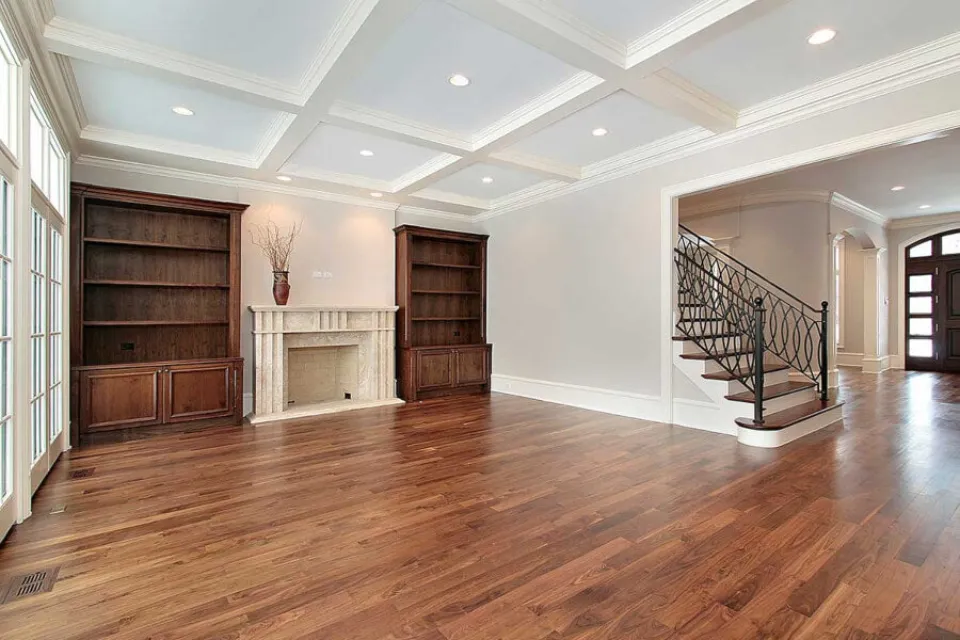
How to Calculate Hardwood Flooring Costs?
You can perform some straightforward calculations in advance to obtain low- and high-cost estimates to ensure that the project’s cost doesn’t come as a complete surprise. Start by measuring the square footage of your space, then add 5% to 10% to account for cuts you’ll make and waste material.
The price of hardwood per square foot is then multiplied by your result. If you haven’t decided on a hardwood product yet, use the typical range of $6 to $12 to find the mid-range and high-end options. The cost of additional materials like thresholds, moldings, and nails should also be factored in.
How to Save on Hardwood Flooring Costs?
Without compromising the caliber of your floors, there are many ways to lower the cost of installing hardwood floors. Here are a few tips:
- Think beyond looks: Install a less expensive grade, species, or grain of wood.
- Refinish, don’t replace: Hardwood restoration is much less expensive than replacement.
- Get multiple quotes: Obtain price quotes from at least three contractors.
- Install prefinished wood: Increased upfront costs are exchanged for lower labor costs.
- Rip up your own carpet: DIY carpet disposal is less dangerous and can lower labor costs.
- DIY engineered wood: Installation and maintenance are cheaper and easier with engineered wood.
- Break up the project: If you are unable to replace the floors throughout your entire home, start by doing so in one or two rooms.
Hardwood Flooring Installation: DIY Vs. Hiring a Professional
Installation of hardwood floors is typically best left to experts. In addition to being unsightly, improper installation can cause the flooring to warp, split, and shrink. According to Goodell, there are myriad ways DIY installation can go wrong, including “damaging wiring or plumbing, not preparing the subfloors or slab properly, and not providing enough space when gluing or nailing the hardwood floors. The last one might be the worst of all, because the floors will look great initially, but as soon as the weather changes and the wood expands, it could ruin the entire installation.” The average homeowner might not be equipped to handle any issues with the joists or subfloor that also add an additional layer of complexity.
It is worthwhile to spend money to find qualified hardwood flooring contractors who have the right tools and know how to install hardwood floors properly. A hardwood floor installation involves more than just measuring and nailing or gluing floorboards down. A professional will know how to install the flooring properly, how to account for changes in temperature and humidity, and whether to use a vapor barrier. Professionals can also work around objects like fireplaces, closets, and countertops while installing exotic hardwoods and custom patterns. Use an engineered floating floor instead of a solid hardwood floor if you want to save money and try installing wood flooring yourself; they are much more forgiving than solid hardwood and are simpler to correct during installation. But, as Goodell advises, “Unless you have thousands of dollars to risk, always use a professional.”
Suggested reading: So, does a bedroom have to have a closet? Below will tell you what makes a bedroom a bedroom. Surprise! The answer to this question is not that simple. In order to share our research with you here, we conducted a little investigation. Keep reading.
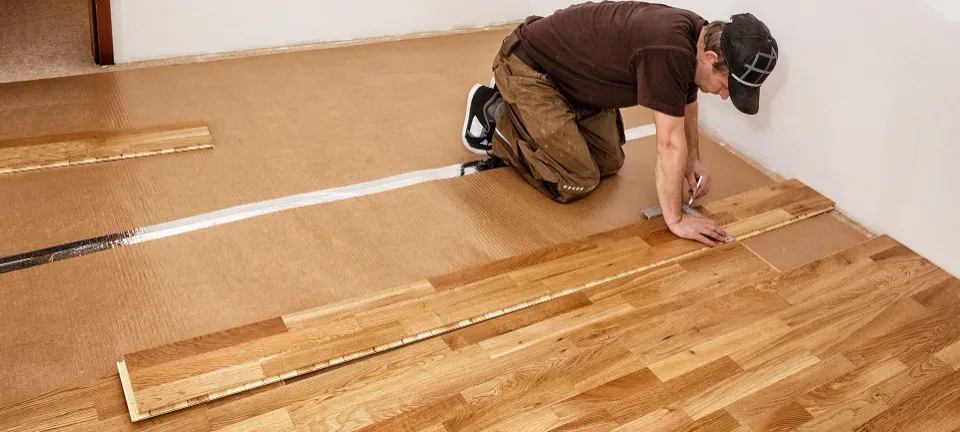
Do I Need Hardwood Flooring Replacement?
Hardwood floors have a classic beauty that can deteriorate over time into visible wear and tear. A number of warning signs point to the need for new flooring.
Repeated Refinishing
The ability to sand and refinish hardwood floors repeatedly is one advantage, but how frequently is too frequently? Floorboards are only so thick and can’t handle endless sanding and revarnishing. A floorboard that has been overly sanded will be frail and vulnerable to cracking. If the hardwood floors have reached this point, it may be time to replace them.
Scratches and Wear and Tear
Wood flooring can get scratched up from moving furniture, normal wear and tear, and pets. A few scuffs are to be expected, but if the flooring is heavily scratched or deeply gouged, it might be necessary to replace the flooring. If the wood flooring has chips and scrapes that penetrate deep into the wood, the flooring becomes susceptible to water damage due to the missing coating or varnish. Worn stain can lead to more serious issues such as splintered or warped wood, both of which call for a replacement.
Water Damage
Water damage is a common concern for homeowners with hardwood flooring. Although both types of flooring can stain, warp, rot, and separate if exposed to significant amounts of water due to plumbing problems or flooding, engineered wood flooring is more resistant to water damage than solid hardwood. One of the most obvious signs that wood flooring needs to be replaced is significant water damage. A telltale sign of water damage is cupping, where the center of each board has begun to dip.
Exposed Nails
Anyone who steps on exposed nails that protrude through the top of the flooring may experience pain and injury. Nails typically appear in high-traffic areas where there is a high chance of tripping over one or stubbing a toe. It might be time to consider replacing the hardwood flooring if there are numerous exposed nails over a sizable area of the flooring.
Discolored Wood
Wood flooring’s color may mutate over time as a result of sun exposure or water damage. This is particularly apparent if some areas of the flooring have been subjected to more sunlight than others. Refinishing can fix superficial discoloration, but gray or very dark stains may indicate that water has harmed the wood’s structure and that the flooring needs to be replaced.
Creaking Floorboards
A sign that the structural integrity of the wood flooring is weak and compromised is creaking floorboards, which typically indicate that the wood is rubbing against the subfloor or against itself. Wooden floorboards that sag or creak may be a sign of foundation movement or water damage. Dipping or swelling hardwood floors are signs of more serious structural issues.
Suggested reading: Types of flooring you can put over ceramic tile includes ceramic tiles, laminate flooring, vinyl flooring, carpet, epoxy coating, cork flooring, wood flooring, and new fired tile. But, why choose these floorings? Below will give specific reasons.
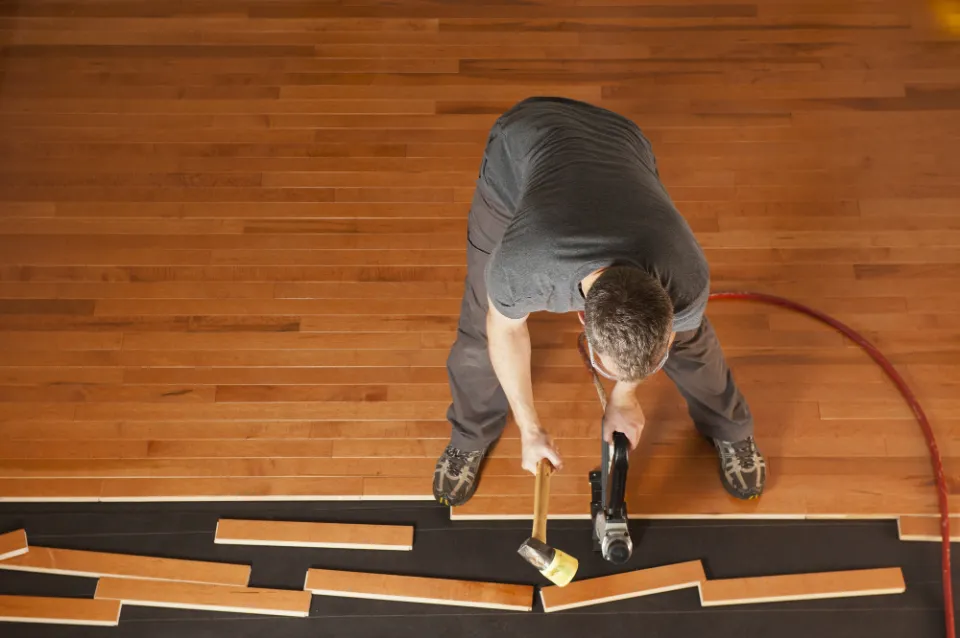
Benefits of Hardwood Flooring
There are many advantages to having hardwood floors in a home, including raising the overall value and marketability of the property. Brand-new hardwood flooring can transform a home by providing a fresh new look.
Increased Home Value
Professionally installed hardwood flooring can last for generations. Wood flooring maintenance and replacement can both increase the value of a building, making them long-term investments. Hardwood floors typically have a return on investment (ROI) of between 70% and 80%, making them a very good investment. Both solid and engineered hardwood are suitable for this.
Durability
The price to install a carpet or tile floor may be less than that of installing a hardwood floor, but hardwood flooring can last a lot longer before needing repair or replacement. It’s normal to find some dents or scratches, but refinishing can easily fix them. Even this kind of maintenance is typically only required once every ten years or so.
Low Maintenance
Hardwood floors require relatively little maintenance. For general upkeep, they need weekly sweeping, vacuuming, mopping with one of the best hardwood floor cleaners, and occasional deep cleaning. To prevent spills and stains from soaking into the wood, it’s crucial to be watchful of them. The life of the hardwoods will be further prolonged by taking additional precautions like using furniture pads. A fresh wax coat or finish will make them look brand new once they do begin to look worn.
Reduced Allergens
Even when cleaned frequently, carpet still gathers dust, dirt, and other allergens, despite the fact that it may be cozy and reduce noise. Having hardwood floors may improve a home’s air quality, since dust is easily swept and mopped away without leaving a trace.
Design Versatility
A timeless option that never goes out of style is hardwood flooring. Even among different wood species and finishes, the majority of wood floors are adaptable to any design aesthetic. The wood can always be stained to the homeowner’s preferred shade if they choose to alter the appearance of a room or want a warmer finish.
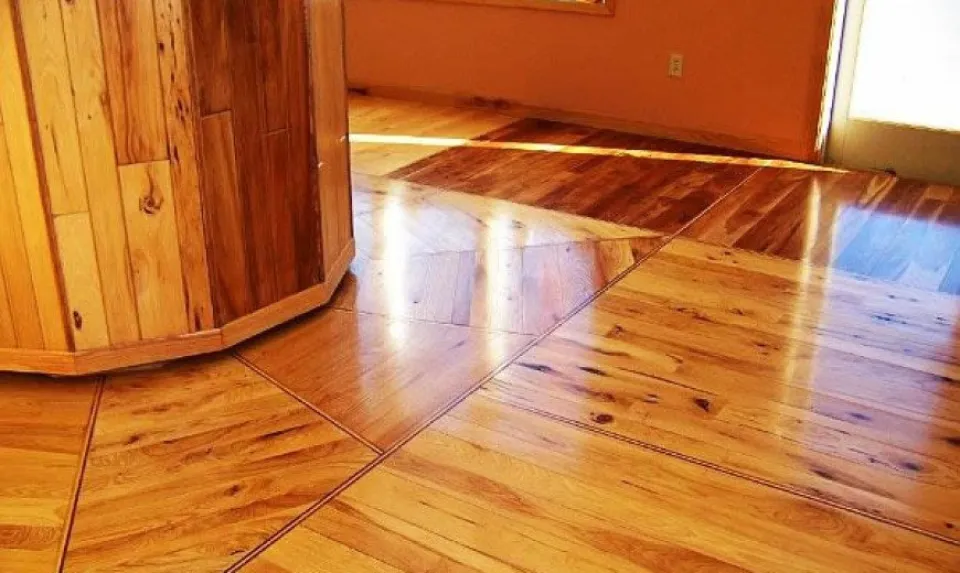
Frequently Asked Questions
What is the Difference Between Solid Hardwood and Engineered Hardwood?
It is only wood in solid hardwood flooring. Most often, it’s between 5/8 to 3/4 inches thick. It can therefore be repeatedly sanded and refinished. But that’s not the case with engineered wood, which is what explains the lower price tag. Most engineered wood only measures a few millimeters of real wood that can be refinished, and under that is plywood. That means that over the course of its lifetime, you might only be able to refinish it once or twice.
Should I Install My Flooring on My Own Or Should I Hire a Professional?
Your ability to complete DIY tasks will determine the answer. You can probably finish your own flooring installation if you’re handy and consider yourself an expert do-it-yourselfer. But if you’re not, it may be best to hire a professional who’s able to consider every aspect of your job, from removal to underlayment to any extra pieces you might need.
What Are Some Recent Flooring Trends I Might Want to Consider?
In 2021, homeowners seem to be seeking a more uniform, neutral look that brings nature directly into their living spaces. This calls for paler hues, fewer variations like knots and striations, and longer boards that help create the illusion of space by feeling more open.
How Much Does It Cost to Install Tile Flooring?
Tile flooring installation can range from $1,500 (including tile) to $2,400 for a 120-square foot space, which equals around $13 to $20 per square foot.
How Much Does Sheet Vinyl Flooring Cost?
Vinyl flooring costs, on average, between $0.50 and $2 per square foot, while vinyl plank and vinyl tiles cost $2 to $3 per square foot. Luxury vinyl plank and luxury vinyl tile cost between $2.50 and $5 per square foot.
How Much Does It Cost to Install Laminate Flooring?
Plastic laminate flooring can cost between $1 and $5 per square foot, but real wood laminate flooring can cost up to $12 per square foot.
Summary: How Much Does Hardwood Flooring Cost?
The average cost of installing hardwood flooring is $3 – 10 per square foot of materials and $3 – 8 per square foot of labor, totaling $6 – 18 per square foot.
If you have any questions, please leave a comment. My Prime Home tries to give you the best home improvement information. Don’t forget to share the post. Thank you for reading.
Read about
